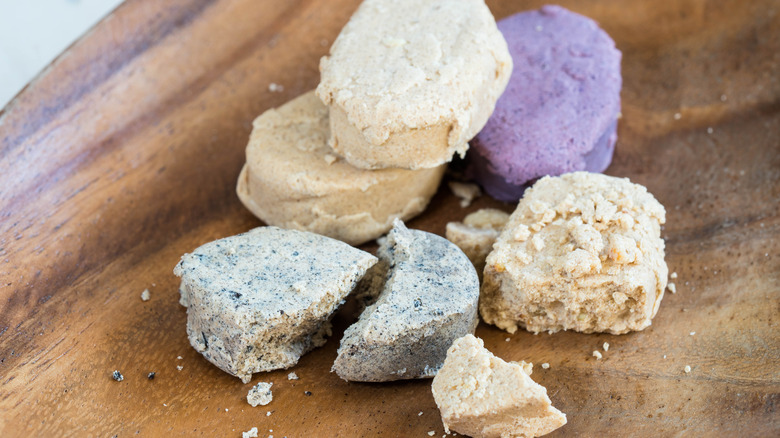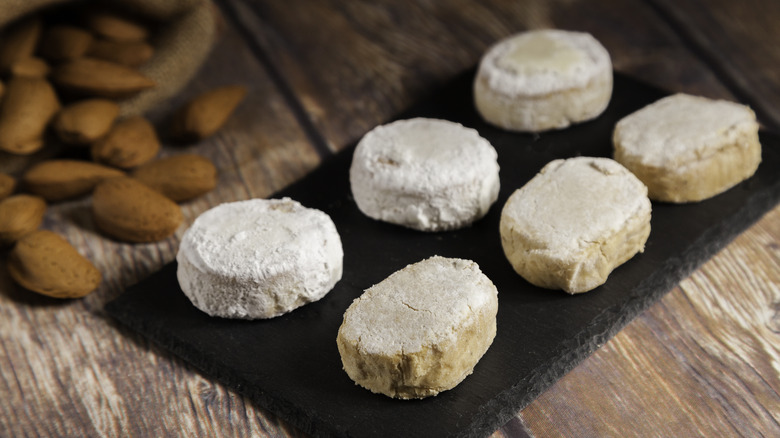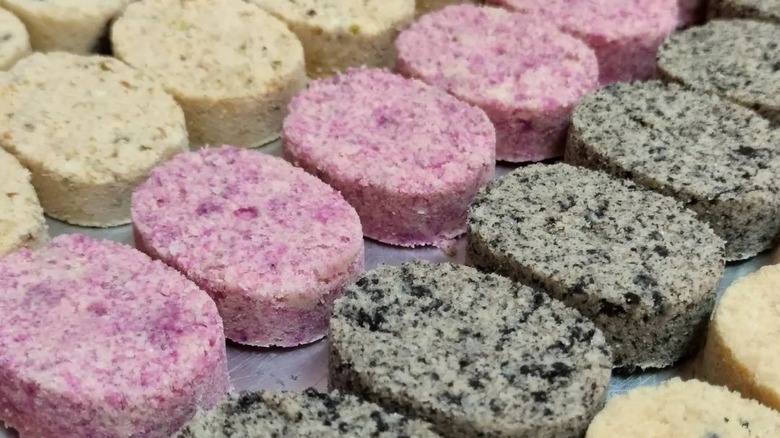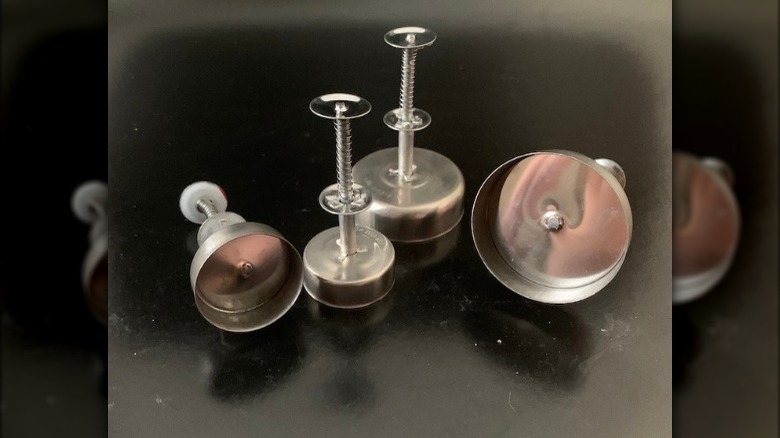How Filipino Polvoron Shortbread Is Different From Its Western Namesake
Brazo de Mercedes. Tocino del cielo. Pastillas. Ensaimada. The names may sound Spanish, but these desserts are as Filipino as they come. That so much of the Philippine culinary tradition should be inspired by Spain should come as no surprise, since the former European power held on to the Southeast Asian country from 1521 to 1898, when Spain lost the Philippines to the United States in the Spanish-American War. In fact, sociologist Anthony Ocampo says the Spanish held on to the Philippines for longer than most of the countries it once colonized in Latin America, according to NBC.
The length of the two countries' shared history can explain the existence and the popularity of Spanish-inspired culinary treats like polvoron (also known as pulboron or polboron, per The Little Epicurean). Some sites, like SBS, have described polvoron as the "Filipino shortbread," even though the texture of this milky treat is not the same as its western namesake. While polvoron is crumbly and fragile, western shortbreads are sturdy, solid, and more cookie-like.
Origins of polvoron
The name polvoron is derived from the Spanish word polvo, or dust. Unlike shortbread which is first made into a paste of butter, sugar, and flour before it is baked, polvoron is, as its name suggests, quite dry and crumbly. Philippine polvoron is also made with more ingredients: flour, full-cream powdered milk, sugar, butter, and margarine, and it is not baked. Instead, the ingredients for polvoron are first mixed, then compressed into a mold with a spring mechanism that allows the finished product to be extruded after it is compacted.
Cooking sites trace the origin of Philippine polvoron to its Spanish namesake the polvorone, which is normally enjoyed during the Christmas season. The Spanish polvorone has two qualities that make it live up to its name: it crumbles with ease, and it can come coated with powdered sugar, making it look as though it is covered in dust. And while the Spanish polvorone shares similar qualities with another crumbly Spanish cookie known as mantecado, polvorone uses butter, while mantecado is made with pork lard — although vegetable shortening can also be used today. Spanish mantecados also appear to be more similar to Mexican polvorones tradicionales, which are made with wheat flour, lard, chopped-up nuts, as well as powdered sugar. With no record of how or where the first polvoron was made, we can only guess that the Spanish (or Mexican) polvorones were adapted by enterprising bakers when the treat made it to the Philippines.
Making polvoron is easy
Making Philippine polvoron is so easy any child (with adult supervision) can do it. Polvoron is made by first toasting flour in a pan over medium heat. While the step might sound like an option, it is important because it ensures that raw flour, which can be quite germy, is not ingested, per The Little Epicurean. Toasting the flour, which can be cooked to a darker brown, even adds a bit of color to the finished product.
Once the flour is toasted, it is placed in a bowl along with powdered milk, sugar, and melted butter. For added flavor, variety, and texture, drop-ins like crispy rice, crushed Oreo cookies, and crumbled nuts like cashews can be included individually. Once the powder has been thoroughly mixed, the you're ready to turn powder into polvoron.
While Spanish polvorones are enjoyed as a holiday treat, Filipinos see polvoron as something they can enjoy everyday. But the milky cookie does play a starring role at parties, where people compete to see how many polvorons they can stuff into their mouths before they whistle, which is not an easy task because the pastry is so dry, per SBS.
Polvoron molds give this crumbly cookie its shape
Polvoron would be polvo without the special molds that give them their shape. After the flavored dry powder is mixed thoroughly before it is packed into the little circular polvoron molds. The more firmly the ingredients are packed, the higher the chances are that the milky treat doesn't crumble after it is released and when it is being handled. Molds are available on Amazon, and come in different shapes and sizes: they can be circular or oblong, small or large — which Tagaloglang says can be as big as 2.2 inches in diameter.
If you can't find a polvoron mold, a pastry or cookie cutter, or an inverted tart pan will do the trick too. Just remember to pack everything tightly, because polvoron can crumble very quickly. But if you're really inclined, cooks like Talentadong Chef says he has dispensed with molds and chooses to store the polvoron in a jar, so he can enjoy it with a spoon.



